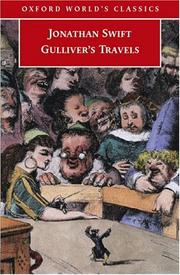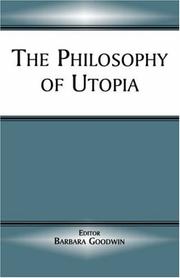| Listing 1 - 10 of 77 | << page >> |
Sort by
|
Book
Year: 2013 Publisher: [Place of publication not identified] : Project Gutenberg,
Abstract | Keywords | Export | Availability | Bookmark
 Loading...
Loading...Choose an application
- Reference Manager
- EndNote
- RefWorks (Direct export to RefWorks)
Book
Year: 1849 Publisher: Paris : Groupe Ebooks Libres et Gratuits,
Abstract | Keywords | Export | Availability | Bookmark
 Loading...
Loading...Choose an application
- Reference Manager
- EndNote
- RefWorks (Direct export to RefWorks)
Baladi découvre tout d'abord "les Robinsons suisses" sous forme de série télé durant les années 70, puis tombe par hasard bien des années plus tard sur le roman à la base de la série, roman écrit en allemand par un écrivain bernois, et datant du début du 19e siècle. C'est en jouant avec l'idée d'adapter ce livre (qu'il n'a toujours pas lu ! ) qu'il déniche alors la traduction qu'en a fait la Baronne de Montolieu.0Mais la Baronne de Montolieu ne s'est pas contentée de traduire le livre, elle en a changé certains passages jugés trop moralisateurs, et a même écrit des chapitres supplémentaires au roman. Baladi va donc décider de s'atteler à une adaptation, mais en commençant par le chapitre 37 (le premier de la suite écrite par la Baronne, vous suivez ? ) et en se sentant très libre (comme la Baronne!) dans son adaptation.
Book
ISBN: 2346061271 Year: 2016 Publisher: Paris : Garnier freres,
Abstract | Keywords | Export | Availability | Bookmark
 Loading...
Loading...Choose an application
- Reference Manager
- EndNote
- RefWorks (Direct export to RefWorks)

ISBN: 0791481689 1423785487 9781423785484 0791467775 0791467783 9780791467787 9780791467770 9780791481684 Year: 2006 Publisher: Albany State University of New York Press
Abstract | Keywords | Export | Availability | Bookmark
 Loading...
Loading...Choose an application
- Reference Manager
- EndNote
- RefWorks (Direct export to RefWorks)
Reminiscent of More's Utopia and Swift's Gulliver's Travels, Denis Veiras's History of the Sevarambians is one of the great utopian novels of the seventeenth century. Set in Australia, this rollicking adventure story comes complete with a shipwreck, romantic tales, religious fraud, magical talismans, and supernatural animals. The current volume contains two versions of Veiras's story: the original English and the 1738 English translation of the expanded French version. Veiras's work was well known in its own time and has been translated into a number of languages, including German, French, Russian, and Japanese, while the English version has been largely forgotten. The book has been read to teach a variety of political doctrines, and also has been cited as an early development in the history of ideas about religious toleration. It reveals a great deal about early modern English, Dutch, and French attitudes toward other cultures. One of the first utopian writings to qualify as a novel, it can be interpreted as a metaphor for human life, in all its complexity and ambiguity.
Book
Year: 2006 Publisher: Paris : Groupe Ebooks Libres et Gratuits,
Abstract | Keywords | Export | Availability | Bookmark
 Loading...
Loading...Choose an application
- Reference Manager
- EndNote
- RefWorks (Direct export to RefWorks)
Quatre musiciens français visitent l'île artificielle de Standard Island, caprice de milliardaires américains. Opulente ville, campagne souriante, installations électriques futuristes, tout y est parfaitement capitaliste et arrogant, en contraste avec le naturel des îles et leurs populations primitives. Des pirates l'abordent, des fauves l'envahissent ... Critique violente du capitalisme occidental, L'Île à hélice a été écrite en 1895.
Book
Year: 2012 Publisher: [Place of publication not identified] : Project Gutenberg,
Abstract | Keywords | Export | Availability | Bookmark
 Loading...
Loading...Choose an application
- Reference Manager
- EndNote
- RefWorks (Direct export to RefWorks)

ISBN: 1281769835 9786611769833 0191517151 9780191560781 0191560782 9780191517150 9780192805348 0192805347 9780199536849 0199536848 Year: 2005 Publisher: Oxford New York
Abstract | Keywords | Export | Availability | Bookmark
 Loading...
Loading...Choose an application
- Reference Manager
- EndNote
- RefWorks (Direct export to RefWorks)
"Gulliver's travels purports to be a travel book. It is a blend of fantasy and realism and describes the shipwrecked Gulliver's encounters with the inhabitants of four places: Lilliput, Brobdingnag, Laputa, and the country of the Houyhnhnms"--Provided by publisher.
Gulliver, Lemuel (Fictitious character) --- Voyages, Imaginary --- Travelers
Book
ISBN: 0191586250 0585370680 9780191586255 9780585370682 Year: 1998 Publisher: [Place of publication not identified] Oxford University Press
Abstract | Keywords | Export | Availability | Bookmark
 Loading...
Loading...Choose an application
- Reference Manager
- EndNote
- RefWorks (Direct export to RefWorks)
Voyages, Imaginary --- Travelers --- English --- Languages & Literatures --- English Literature

ISBN: 9789004484719 9789051838145 Year: 1994 Publisher: Amsterdam : Rodopi,
Abstract | Keywords | Export | Availability | Bookmark
 Loading...
Loading...Choose an application
- Reference Manager
- EndNote
- RefWorks (Direct export to RefWorks)
How did Europeans view the unknown region at their antipodes in early times, before the explorations of Captain Cook and others made it well known? Throughout the ages it has evoked fantastic images which affected the arts and sciences, and the evolution of the novel in the century prior to the major discoveries was influenced in the same way. The eighteenth century was also a critical phase in European social history, a time when many modern patterns of economic life and international relations were formed. Distant explorations and discoveries bore implications for that process, which tended to be worked out in fictional voyages mingling fact with fiction. Images of the Antipodes asks what these can tell us about Europe's expansion to the limits of the New World - about the first contacts between cultures with very different worldviews, about the colonial relations that followed, and about the geopolitics of the region since then. They offer a perspective on cross- cultural relationships generally - nowhere more apparent than in their use of ancient images of the antipodes. This is the third part of a study on the intellectual history of travel fiction, and deals with the period from the 1720s to the 1790s, focusing on an issue that is as vital now as it was then: cultural or racial stereotyping, and the link between this and the differing politico-economic aspirations of peoples. It is a dual problem of exploitation, which has been associated with the antipodes since the beginnings of Western literature. The book discusses teratological fantasies, the literary background in utopias and Robinsonades, Gulliver's Travels and other travel fiction from mid-century onwards, the parallels between real and imaginary voyages, and the way the latter often prefigured the rise of modern anthropology and of colonial relationships in the austral regions. Particularly relevant was the odd blend of arcadianism and horror inspired by, or projected onto, these places in the later eighteenth century - as it had long been in the past. The works discussed are chiefly English and French, but include other European examples of the type.

ISBN: 0714651532 0714681695 9781136337567 1136337563 9780714651538 9780714681696 0203045564 9780203045565 1283884992 9781283884990 9781136337635 9781136337703 1136337636 Year: 2001 Publisher: London Portland, OR F. Cass
Abstract | Keywords | Export | Availability | Bookmark
 Loading...
Loading...Choose an application
- Reference Manager
- EndNote
- RefWorks (Direct export to RefWorks)
This collection addresses the important function of utopianism in social and political philosophy and includes debate on what its future role will be in a period dominated by dystopian nightmare scenarios.
Utopias. --- Utopies --- Ideal states --- States, Ideal --- Utopian literature --- Political science --- Socialism --- Voyages, Imaginary --- Dystopias --- Utopie
| Listing 1 - 10 of 77 | << page >> |
Sort by
|

 Search
Search Feedback
Feedback About UniCat
About UniCat  Help
Help News
News